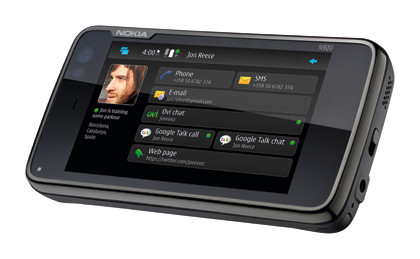Linux on the move: the future of portable distros
What to expect from Moblin, Android, Chrome OS and more
Alexander Graham Bell never thought phones would turn out like this…
The first device that really caught our attention was Trolltech's Greenphone. It ran an embedded version of Linux and provided an API for programmers to get stuck into and develop their own applications for the new platform. It never really took off, but then the motives for Trolltech doing this have always been somewhat unclear.
It wasn't long after its release that it announced all the stock had been bought and that the project had come to the end of its life. And it wasn't long after this that Nokia intervened and bought Trolltech…
Maemo
Nokia has long been experimenting with embedded Linux systems, via its Maemo platform. We've reviewed these devices in the past, and they each had beautiful and responsive touchscreens, alongside an accessible GTK-based graphical front-end. The only thing these devices were really missing was mobile phone functionality, which always seemed an incongruous omission.
Soon after Nokia bought Trolltech it was announced that Qt would be ported to Maemo, which we're still looking forward to. But the big announcement for Linux-based Nokia devices is the N900, a smartphone that combines the latest generation of the Maemo platform with phone functionality.

It has 3D acceleration and multi-touch, and can perform SIP and Skype calls out of the box. It also comes with an open API that developers can use to build their own applications, and these can be sold on Nokia's own app store, called Ovi Store. It's Nokia's great hope in the battle to defeat Apple's iPhone, and it's a testament to how far we've come that it's built around the power and community offered by Linux.
Get daily insight, inspiration and deals in your inbox
Sign up for breaking news, reviews, opinion, top tech deals, and more.
Android
Of course, there's one particular mobile phone operating system that has done a great deal to change attitudes towards Linux as a mobile platform, and that's Android. It's not particularly because it's any better to use or that it has more applications available, or that developers can get stuck in without selling their souls – it's because it was designed and developed by Google.
This has given it an amazing amount of publicity, and positions the Android platform alongside Apple and Microsoft in the world's media. There are now dozens of phones that either use Android now or will in the future.
In the UK, the highest profile are those offered by T-Mobile, the Hero and the G1. Both are manufactured by HTC, a prolific company that builds Windows Mobile devices with similar specifications.
But there are also a great number of devices from Motorola, including the wonderfully named Motorola Morrison and the much hyped Motorola Droid. This seems to be the current darling of the Google stable, as it's the only Android phone judged powerful to run its new turn-by-turn navigation from Google Maps.
But the best news is that many of these companies are part of the Open Handset Alliance, a group aiming to bring open standard to the mobile phone market. It seems the combination of Linux and Android is unbeatable.
Current page: Linux on mobile phones
Prev Page UNR 9.10 vs Moblin 2.1 Next Page The future is Chrome